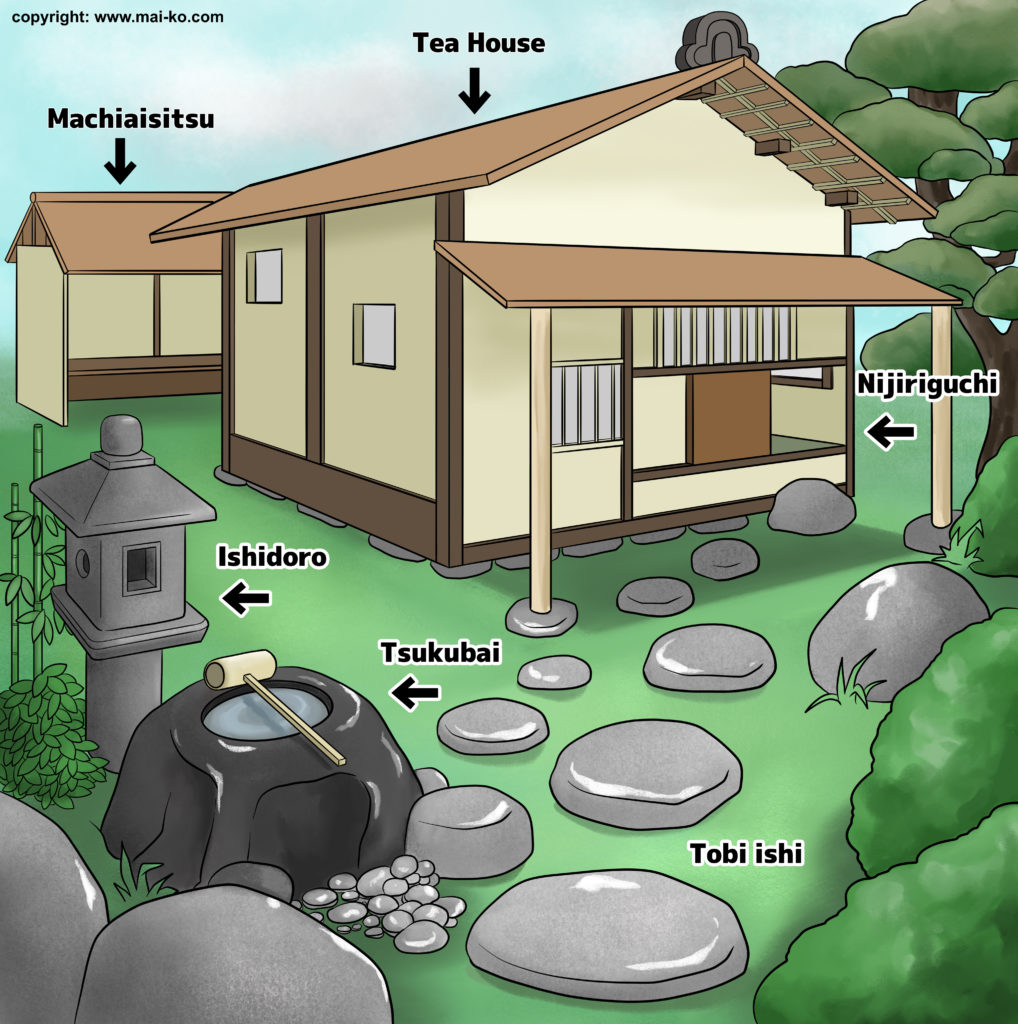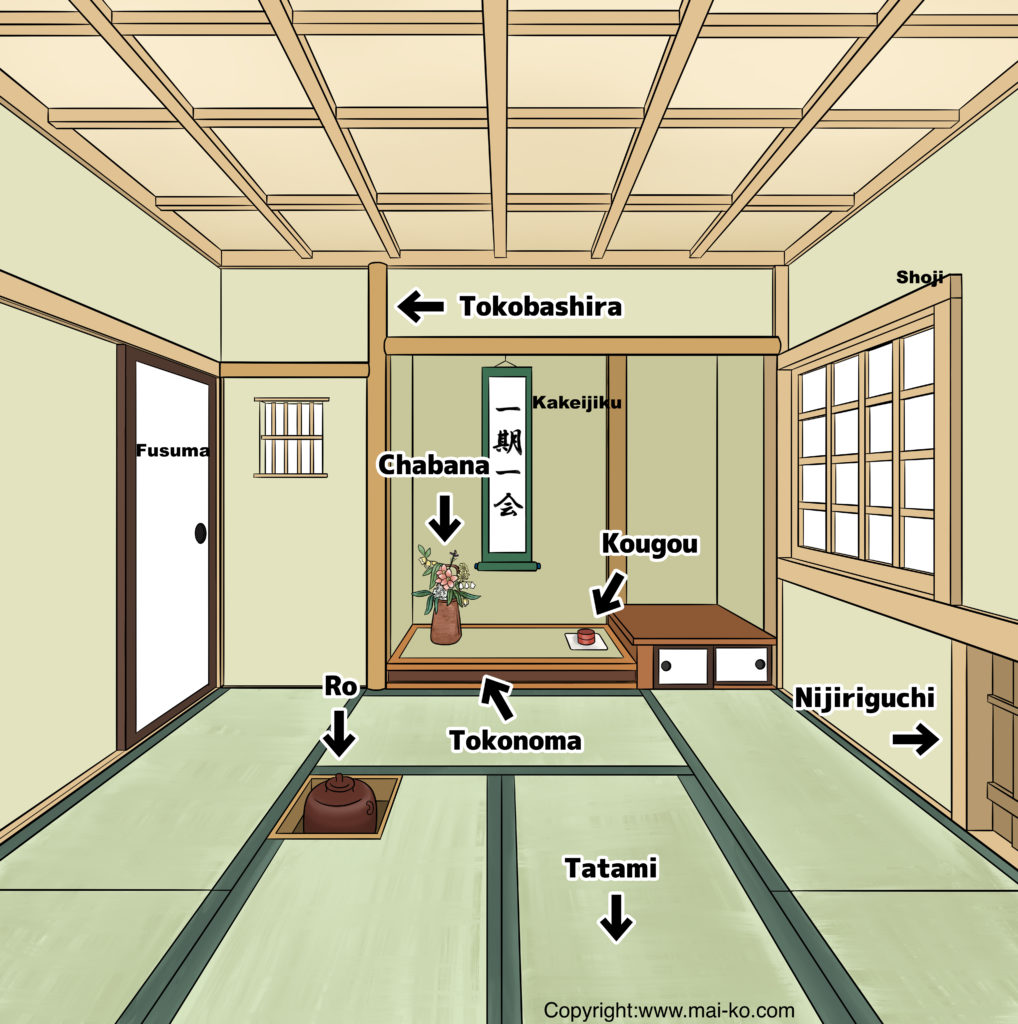
Tokonoma.
Alcove. A hand brushed hanging scroll should be displayed in the alcove. Usually seasonal flowers (usually picked up on that day) displayed on the left side of the scroll. Chabana (Tea ceremony flowers) are usually put in the nagare style (thin and tall) of pots. The incense container must be placed on the right side of the hanging scrool. The Tea ceremony incense tends to be a little different from regular incense burners: a very small incense stone buried in the thin sand.
Tokobashira.
Main Pillar. Unique or aesthetically appealing wooden pillar is placed on the left side of the tokonoma. Simple, natural but unique look is always sought in the room.
Furosaki Byoubu.
Folding screen. To mark the host’s spot a short folding screen is used. The guests carry their fans to mark the partition between them and the other guests.
Furo and ro.
Hearth. To make sure the water is boiled and served smoothly, there is a hearth (square shaped) is located in the middle of the tea room. In the winter time, the hearht is used while in the summer time the hearth is covered by tatami. There are many intricate rules of how to put different types of charcoal on the ashes in the winter and summer times called sumidemae.
Nijiri guchi.
Half-door entrance for the guests. To imply that everyone is equal and to prove that the samurais who enter the room do not have weapons, all the participants enter the room from a very small door called nijiri guchi. It is about 60 cm x 65 cm.
Sadoguchi fusuma.
Entrance room for the host. There is a rule on how to enter the Tea ceremony room for the host. The fusuma is pushed to the left side by the left hand first (2/3rd) and the right hand afterwards (the remaining 1/3rd). The host has to sit on the floor in the seiza position and keep one hand on the lap all the time.

Japanese Tea House Copyright © Kimono Tea ceremony Maikoya

Page updated:
Contact us : info@mai-ko.com





